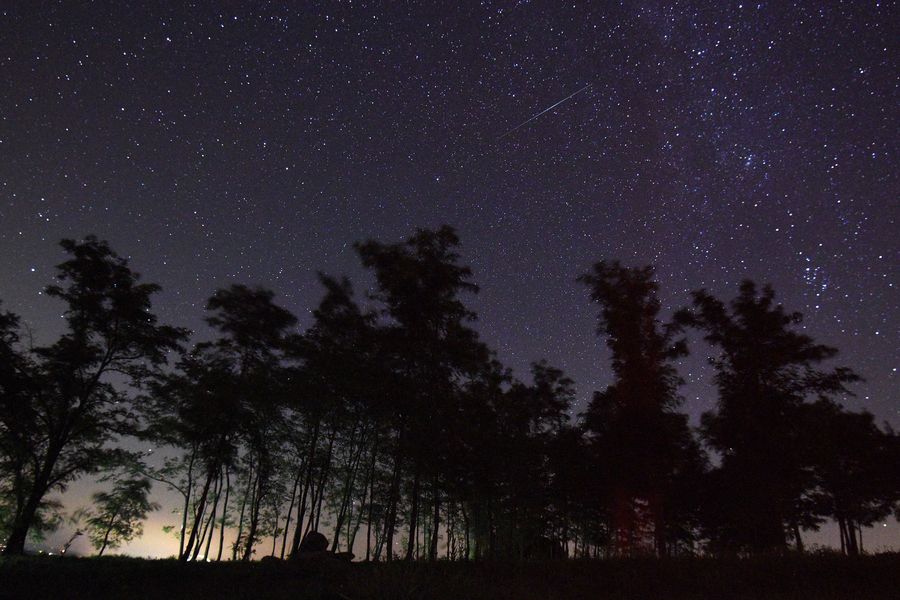
File photo: A flashing meteor is seen during the Perseid Meteor Shower in the starry sky above the woods in Strigova, Croatia, on Aug. 12, 2018. (Xinhua/Vjeran Zganec Rogulja)
People in Northern Hemisphere will be able to see the annual Perseid meteor shower in its peak on Monday and Tuesday if the sky and surroundings are dark enough, NASA says.
LOS ANGELES, Aug. 11 (Xinhua) -- The annual Perseid meteor shower is anticipated to peak on Monday and Tuesday, and is visible to anyone in the Northern Hemisphere - as long as the sky and surroundings are dark enough, according to NASA.
"Under a clear, dark sky far from city lights, we expect meteor rates as high as 100 per hour on peak night," said Bill Cooke of NASA's Meteoroid Environment Office.
The show can be especially good this year because the moon is nearly new when the shower peaks, said Cooke.
The Perseid meteor shower is caused by debris from Comet Swift-Tuttle. Every 133 years the huge comet swings through the inner solar system and ejects a trail of dust and gravel along its orbit. When Earth passes through the debris, specks of comet-stuff hit the atmosphere at 140,000 mph and disintegrate in flashes of light, according to NASA.
Generally, every year, some meteors from the Perseids are visible from the middle of July to late August.
Meteors from Comet Swift-Tuttle are called Perseids because they seem to fly out of the constellation Perseus. This arrangement of stars, which represents an ancient hero from Greek mythology, rises in the NE around 10 p.m. local time. As Perseus rises and the night deepens, meteor rates will increase, according to NASA.
Meteors will be seen until dawn brightens the sky on Thursday morning, when Perseus is near its highest point in the sky.
NASA suggested that viewers get away from city lights for best results. The darkness of the countryside multiplies the visible meteor rate 3- to 10-fold compared to city views.



